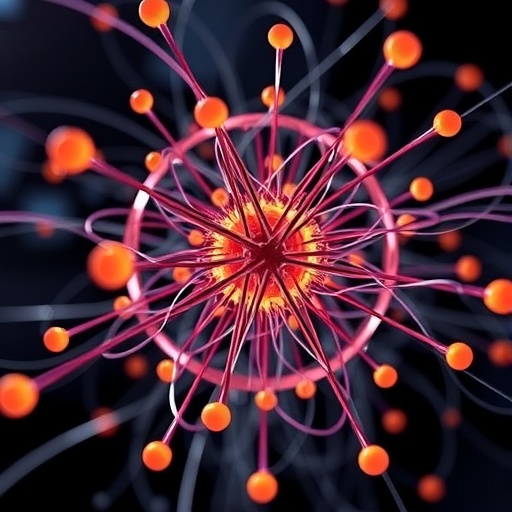In a dramatic leap forward for the field of quantum computing, researchers at the University of Southern California have unveiled a groundbreaking study that positions a new breed of quantum particle, named the “neglecton,” at the forefront of topological quantum computing. Topological quantum computing offers the allure of solving complex problems that are currently beyond the scope of even the most powerful supercomputers. The core of this potential lies within quantum bits, or qubits, which are susceptible to environmental influences that can lead to significant computational errors. Traditional computing paradigms struggle with these limitations, but the introduction of neglectons envisions a pathway to overcome this challenge.
Topological quantum computing leverages the unique characteristics of exotic particles called anyons, particularly Ising anyons, to erect a more robust framework for quantum computation. This is predicated upon the geometric properties of these particles, which are theorized to exist in specialized two-dimensional materials. Ising anyons have shown promise in resisting the types of noise and interference that plague conventional qubits, yet are inherently limited in their computing power. The unique operations they support eschew the possibility of universal quantum computation, as Ising anyons only facilitate a restricted class of operations known as Clifford gates.
In a new publication in Nature Communications, an interdisciplinary team led by mathematicians and physicists from USC has illustrated a remarkable solution to this limitation by integrating a single additional type of anyon, aptly named the neglecton. Previous methodologies had erroneously deemed these particles as extraneous, but this research heralds their importance in achieving universal quantum computation through the process of braiding alone. The introduction of neglectons not only broadens the computational capabilities of Ising anyons but also seeks to revolutionize the landscape of quantum computing by suggesting a more inclusive framework for these exotic particles.
The significance of this advancement derives from the application of non-semisimple topological quantum field theories (TQFTs), which present a novel approach to describing anyons. Traditional quantum field theories often overlook specific mathematical components labeled as having “quantum trace zero,” inadvertently discarding these elements as inconsequential. However, the USC team, under the expertise of Aaron Lauda, recognized that these seemingly irrelevant components are fundamental to the realization of universal quantum computation. It is akin to uncovering hidden treasure within what was previously dismissed as mathematical debris.
In developing this revolutionary framework, the researchers emphasized that only one neglecton is necessary to enable universal computation when paired with Ising anyons. The beauty of this design lies in the fact that the neglecton remains fixed during computations, while Ising anyons are braided around it. This innovative approach simplifies the process, allowing for complex quantum calculations to be executed without the need for additional moving parts. It is a profound evolution in the architecture of quantum computation, marrying elegance with scientific rigor.
However, this mathematical breakthrough was not without its obstacles. The non-semisimple TQFTs introduce peculiarities that could threaten unitarity, a fundamental principle in quantum mechanics that safeguards the integrity of probability during calculations. Conventional wisdom would likely deem these irregularities as detrimental, yet the USC team ingeniously devised a strategy to isolate these mathematical quirks. By strategically constructing their quantum encoding to sidestep potential pitfalls, they essentially quarantined the irregular aspects of their theoretical framework while ensuring that all quantum computations occur within reliable confines.
Lauda remarkably likened their strategy to navigating a house with unstable rooms, where rather than attempting to stabilize every space, the researchers have ensured that computations unfold in areas free from instability. This clever design preserves the reliability of quantum operations, despite the unusual nature of the overarching mathematical structure. “We’ve effectively quarantined the strange parts of the theory,” he stated, reinforcing the importance of consideration in design when venturing into the uncharted territory of quantum computing.
This discovery doesn’t merely resonate within the realm of theoretical physics; it also offers profound implications for practical applications. The work demonstrates how abstract mathematical theories can yield tangible advancements in technology and engineering. Embracing previously underestimated structures has significantly shifted the landscape of quantum information science, unlocking new pathways for experimental verification and potential technological implementation.
The implications are vast. As the team delves deeper into their research, they plan to extend the parameters of their framework and address the unitarity considerations inherent in non-semisimple TQFTs. Concurrently, they aim to pinpoint specific materials capable of exhibiting the stationary neglecton while developing protocols for translating their braiding-based methodologies into practical, attainable quantum operations. The excitement surrounding this research is palpable, as it draws nearer to the realization of universal quantum computing using particles that have already been synthesized within contemporary scientific endeavors.
The elegant synergy of mathematics and quantum mechanics underscores the transformative potential of this breakthrough. By breathing life into previously disregarded mathematical constructs, the USC team has not only advanced the understanding of quantum computing but also provided a clear target for experimentalists to pursue. Should they successfully find a way to manifest this additional stationary anyon, it could redefine the capabilities of Ising-based systems and propel quantum computing into a new era of possibility.
In essence, this triumph signifies a monumental step towards harnessing the full spectrum of quantum computation, illuminating a pathway that was previously obscured by complexities and limitations of traditional frameworks. The implications of this research stretch far beyond academic circles, potentially influencing diverse fields reliant on advanced computational capabilities. As the scientific community eagerly anticipates the forthcoming practical applications, the discovery of neglectons offers a glimpse into a future where quantum computing finally realizes its extraordinary promise.
Subject of Research: Universal quantum computation using Ising anyons from a non-semisimple topological quantum field theory
Article Title: Universal quantum computation using Ising anyons from a non-semisimple topological quantum field theory
News Publication Date: 5-Aug-2025
Web References: Nature Communications
References: None listed in the provided text.
Image Credits: None listed in the provided text.
Keywords
quantum information processing, quantum information




